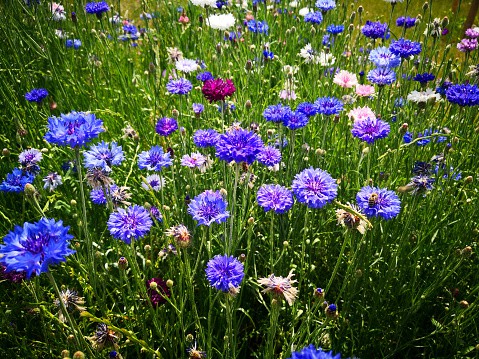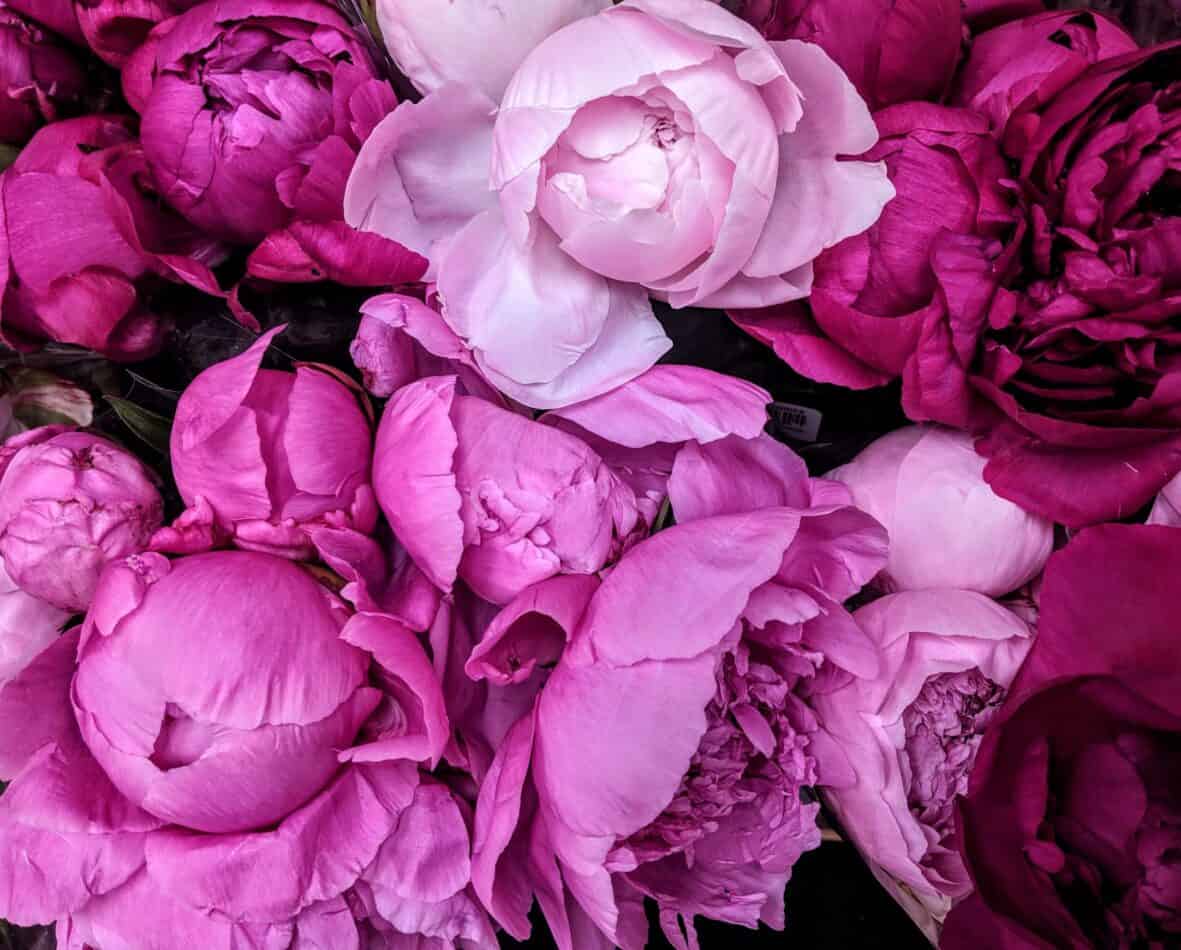Bachelors Button, or Centaurea cyanus, is a small flowering plant in the sunflower family with a striking blue, pink, lavender, or maroon hue. The word “centaurea” comes from the Greek mythological centaur, Chiron, who is said to have introduced the flower to mankind. The plant type is a hardy annual that is native to Europe, growing best in zones 2-11, and requires full sun to partial shade to grow. It typically blooms from late spring until late summer and can be used in bedding, borders, containers, and can also be used for cut flowers.
How to Plant
Bachelors Button, or Centaurea cyanus, should be planted in well-drained soil in a location that receives full sun to partial shade. The soil should be neutral in pH and enriched with organic matter as they will not tolerate wet, boggy conditions. Plant the seeds 6-8 inches apart, in a row, and water consistently to keep the soil moist. It is a relatively disease free and pest-free flower which needs little to no upkeep.
Meaning and Symbolism
The Bachelors Button has a symbolic meaning that goes back to the Middle Ages. In Europe, the plant was said to stand for faithfulness. In the United States, it was seen as a status symbol for being single and unmarried. The flower was also called “buttonhole flower” and a variation on its meaning is that of undying love and unrequited love.
History, Mythology, and Religious Significance
The Bachelors Button was also used medicinally by early Europeans. For example, it was commonly used in folk remedies to treat fever, skin irritations, and wounds. In the Middle Ages, it was believed to offer protection against evil spirits and witches. In some cultures, it symbolized protection from storms. The Bachelors Button is still popular today as a flower used in religious ceremonies and symbolizes faith, joy, and abundance.
Flower Varieties and Their Defining Characteristics
Bachelors Button is part of the Asteraceae family. There are several varieties of Bachelors Button, as follows:
- Pincushion Flower (Centaurea discolor): Burgundy-purple flowers; tall, up to 24 inches; blooms mid-summer to early fall.
- Blackball Centaurea (Centaurea nigra): Wine-red flowers; height up to 18 inches; blooms late summer to early fall.
- White Satin (Centaurea gypsicola): Evergreen foliage; white blossoms; blooms late summer.
- Royal Blue (Centaurea cyanus): Sky-blue flowers; height of up to 18 inches; prefers moist soil; blooms June to August.
- Purple Star (Centaurea dealbata): Purple-blue flowers; height up to 18 inches; prefers moist soil; blooms June to August.
- Yellow Star (Centaurea dealbata): Bright yellow flowers; height of up to 18 inches; prefers moist soil; blooms June to August.
How to Pot and Repot
Bachelors Button can be grown in pots or containers. Use a commercial potting soil mixture, and make sure the container has several drainage holes. Plant the Bachelors Button 8-10 inches deep and 4-5 inches apart and water the soil thoroughly. Place the container in a sunny, sheltered location and water it regularly. After a few years, the soil in the containers will become compacted and need to be re-potted. Carefully lift out the plant, check the roots for damage and remove any dead or diseased roots, then place it in a new container filled with fresh soil.
How to Prune
Pruning Bachelors Button should be done with care to avoid damaging the plant. After flowering, cut the spent flowers and leaves to promote the growth of new flowers. If pruning is not done, the plants will become leggy and look unattractive. Avoid pruning too hard or pruning immature buds and shoots, as this could damage the plant. For excessive pruning, use clean garden tools and always disinfect tools before use as a precaution for cross-contamination.
How to Propagate
Bachelors Button can be propagated by either seed or division. Seed propagation of Bachelors Button is done by sowing the seeds directly in the ground or in containers in the spring. Division is done by carefully breaking apart the existing plants, resulting in smaller pieces that are then replanted in individual containers or into the garden. When replanting, ensure each division has some established roots and enough soil around the roots.
Common Pests and Diseases
Bachelors Button is relatively disease free, with the only real pests being aphids, leaf miners and slugs. Aphids are tiny pear-shaped insects that suck the juice from the plants and can eventually cause wilting and death. Leaf miners are small worms that burrow their way through the foliage, resulting in unsightly leaf damage. Slugs feed on soft vegetation, including the leaves and stems, and can cause considerable damage, especially to young seedlings. Pests and diseases can be controlled by using pesticides to kill insect pests and fungicides to kill diseases.
Questions and Answers
Q. What is the best time to plant Bachelors Button?
A. The best time to plant Bachelors Button is in the spring, when soil temperatures are between 60 and 65°F.
Q. How often should I water Bachelors Button?
A. You should water Bachelors Button regularly to keep the soil moist, but not soggy. Never let the soil dry out completely as this will damage the flower.
Q. How long can Bachelors Button be expected to last?
A. In the right conditions, Bachelors Button can grow for several years.
Fact Sheet
| Bachelors Button | Centaurea Cyanus |
|---|---|
| Family | Asteraceae |
| Plant Type | Hardy Annual |
| Mature Size | Up to 24 inches tall |
| Sun Exposure | Full Sun to Partial Shade |
| Soil Type | Well-Drained, Neutral pH |
| Soil pH | Neutral |
| Bloom Time | Late Spring to Late Summer |
| Flower Color | Blue, Pink, Lavender, Maroon |
| Hardiness Zones | 2-11 |
| Native Area | Europe |
| Interesting Facts | Used medicinally in Europe, believed to offer protection against evil spirits and witches, symbolic meaning of faithfulness and unrequited love. |
What we love from Amazon this week
Buy these wonderful flowers directly from Amazon:















